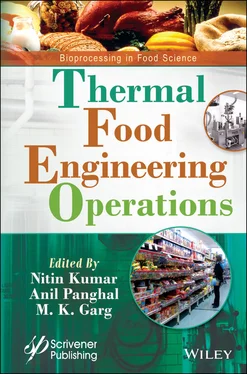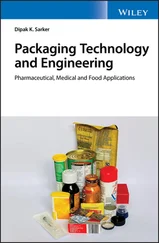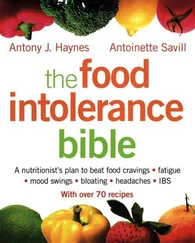NITIN KUMAR - Thermal Food Engineering Operations
Здесь есть возможность читать онлайн «NITIN KUMAR - Thermal Food Engineering Operations» — ознакомительный отрывок электронной книги совершенно бесплатно, а после прочтения отрывка купить полную версию. В некоторых случаях можно слушать аудио, скачать через торрент в формате fb2 и присутствует краткое содержание. Жанр: unrecognised, на английском языке. Описание произведения, (предисловие) а так же отзывы посетителей доступны на портале библиотеки ЛибКат.
- Название:Thermal Food Engineering Operations
- Автор:
- Жанр:
- Год:неизвестен
- ISBN:нет данных
- Рейтинг книги:5 / 5. Голосов: 1
-
Избранное:Добавить в избранное
- Отзывы:
-
Ваша оценка:
- 100
- 1
- 2
- 3
- 4
- 5
Thermal Food Engineering Operations: краткое содержание, описание и аннотация
Предлагаем к чтению аннотацию, описание, краткое содержание или предисловие (зависит от того, что написал сам автор книги «Thermal Food Engineering Operations»). Если вы не нашли необходимую информацию о книге — напишите в комментариях, мы постараемся отыскать её.
Presenting cutting-edge information on new and emerging food engineering processes,
, the first volume in the new series, “Bioprocessing in Food Science,” is an essential reference on the modeling, quality, safety, and technologies associated with food processing operations today.
This outstanding new volume:
Audience:
Thermal Food Engineering Operations — читать онлайн ознакомительный отрывок
Ниже представлен текст книги, разбитый по страницам. Система сохранения места последней прочитанной страницы, позволяет с удобством читать онлайн бесплатно книгу «Thermal Food Engineering Operations», без необходимости каждый раз заново искать на чём Вы остановились. Поставьте закладку, и сможете в любой момент перейти на страницу, на которой закончили чтение.
Интервал:
Закладка:
Microwave-assisted Vacuum Drying In recent years, with the rapid accepted growth and popularity, this method comes with the combination of volumetric heating and vacuum drying. The advantages this combination provides are express moisture evaporation and minimum structural and chemical changes of the final dried products [7]. The final results revealed that a combination of both the techniques at 90°C restored the anthocyanins and augmented antioxidant activity when related to supplementary approaches enlisted [84].
Microwave-assisted Infrared Drying IR drying has been utilized in the past years for a varied range of agricultural products due to its acceptance as an alternative technique. However, because of its low penetrating power into the food material, it is combined with microwave energy, and their synergistic effect was observed and correlated by [57] on the drying attributes of kiwifruit and banana. For both the samples, they reported a good amount of moisture loss with reduced drying time up to 98% when related to traditional drying. Similarly, an alternative study [66] also reported the standard quality of raspberries with the drying kinetics which showed the superior class final product at varied vacuum pressures and power levels yielding 17.55% better anthocyanin retention, 2.4 times exclusive crispness value, 21.21% advanced radical-scavenging action, and 25.63% higher rehydration properties than infrared drying (IRD) at finest settings.
Microwave Heating Microwave heating relies on volumetric heating of the food material instantaneously and can also be combined with the convective and radiant heating process [33]. The electric field induces the dipole rotation, generating friction between molecules inside the microwave which assists in heating the food materials [2]. The penetration depth of the microwave is dependent on the food composition and its accompanying changes related to the chemical composition of the food, i.e., cook loss, bioactive components, antioxidant activity, and anti-nutritional factors, comprising phytic acid, trypsin inhibitor, tannins, and saponins [40]. The chicken streak rigidity was lowered after microwave heating which was not significant when cooked with grilling or boiling reported by [9]. However, it was observed differently in the case of beef burgundy which perceived the tougher texture by microwaving than the convection oven [32]. [52] reported a remarkable increase in cooking loss with augmenting core temperature and time of bovine muscle during microwave heating.
Microwave-assisted Infrared Heating In the food sector infrared (IR) radiation offers a wide range of advantages such as an express regulation response, rapid heating with minimum changes in product quality. However, as discussed earlier, its weak penetration power makes this technique only used for surface heating. Besides, there are also chances of unwanted fraction and swelling of the material due to prolonged exposure to IR radiation. Nevertheless, merging microwave with IR heating becomes profitable and could help to tackle all these drawbacks which occur during the process on the surface and inside of food [60].
Microwave-assisted Infrared Baking Microwave heating combined with IR increases the manufacture of confectioneries which was restricted before due to two major aspects, i.e., uneven dispersal of moisture inside the food and poor penetration power. Merging this energy becomes a possible approach to overcome the challenge as the microwave helps to reclaim the time of processing and administrating an effective dispersal of temperature within the material, whereas IR heating remarkably subscribes to crust formation and browning [20]. [55] observed that the legume cakes hold a better characteristic texture with increased volume and desirable surface color when treated in a combination of infrared and microwave as compared to the only conventional oven. Similarly, a gluten-free bread was prepared in an MW-IR oven using different concentration of flaxseed and gums which was kept at a frozen temperature at 20°C for 10 days before baking [56]. The results turned out to be much better as compared to the conventional oven with a darker color, softer texture, and higher volume.
Microwave-assisted Infrared Roasting Roasting is considered to be an appropriate method for flavor, texture, and color enhancement which can be done with limited investment giving to a high production quantity. However, there are not many reports with the explored application of MW-IR grouped for roasting. [76] studied the roasting characteristics of hazelnut using and compared with conventionally roasted ones. In the MW-IR oven, the optimum roasting time was 2.5 min at the power level of 90% with lower and upper halogen lamps powered at 20% and 60%, respectively, whereas conventionally it took 20 min at 150°C. When it comes to quality, the hazelnuts roasted in both techniques showed similar characteristics attributes concerning moisture content, color, and fatty acid composition. However, the above results confirm the reduction of the roasting time significantly which is therefore also recommended for other food materials.
Microwave Cooking The foremost usage of microwave is cooking. This section reports various studies of microwave and effect on the various cooking parameters such as color retention, quality, and taste for different food materials. [70] studied the chemical changes associated with skipjack tuna ( Katsuwonus pelamis ) during the process of boiling at 100°C, frying with sunflower oil at 180°C, then put through canning and at the end microwave heating for 10, 15 and 20 s. It was found that the health beneficial PUFA loss was minimum with boiling, 70–85% during frying, 100% with the canning, and 20–55% during microwave heating. Cholesterol content slightly increased in microwaving with no increase while cooking whereas the highest content was observed with canning and it got lowered during the frying process which could be leaching cholesterol from tuna while frying into the oil. Thus, taking into account all the methods more fatty acids can be preserved with microwave heating [70].
Blanching is usually utilized for the inactivation of enzyme and color retention, for varied fruits and vegetables by immersing it in hot boiling water or steaming with acids or salts solution. Microwave blanching offered the extreme retention of color, chlorophyll, and ascorbic acid contents with better preservation of quality parameters. [17] reported microwave blanching as a better technique than the traditional blanching for peanuts in terms of time and energy saving. However, processing at a high temperature in microwave blanching results in ashy off-flavor.
Microwave-assisted Ultrasonication Ultrasound plays a major role in the food industry and has been applied to vary processing techniques like extraction, drying, sterilization, and freezing with various advantages like maintaining the food quality parameters, augmented food preservation, and also assists in thermal treatments. On the other hand, it also reduces the cost of production by eliminating some of the purification steps [73]. However, ultrasonication does affect the physiochemical parameters, degraded the quality, exhibiting off-flavor in the food material [12]. Therefore, the fusion of microwave and ultrasound making it the microwave-assisted ultra-sonification technique renders a collaborative effect eliminating the drawbacks attached to the individual techniques [13], and therefore, the collective skill has been extensively premeditated for the food sector. The ultrasonication technique with microwave assistance has been verified as an innovative process for rapid and effectual extraction. The most unique feature which it has is the exceptional achievement of weakening the hydrogen bonds and subsequently augmenting the penetration rate of solvent into the matrix by amplifying the dipole rotation hence enabling systematic solvation [42].
Читать дальшеИнтервал:
Закладка:
Похожие книги на «Thermal Food Engineering Operations»
Представляем Вашему вниманию похожие книги на «Thermal Food Engineering Operations» списком для выбора. Мы отобрали схожую по названию и смыслу литературу в надежде предоставить читателям больше вариантов отыскать новые, интересные, ещё непрочитанные произведения.
Обсуждение, отзывы о книге «Thermal Food Engineering Operations» и просто собственные мнения читателей. Оставьте ваши комментарии, напишите, что Вы думаете о произведении, его смысле или главных героях. Укажите что конкретно понравилось, а что нет, и почему Вы так считаете.












